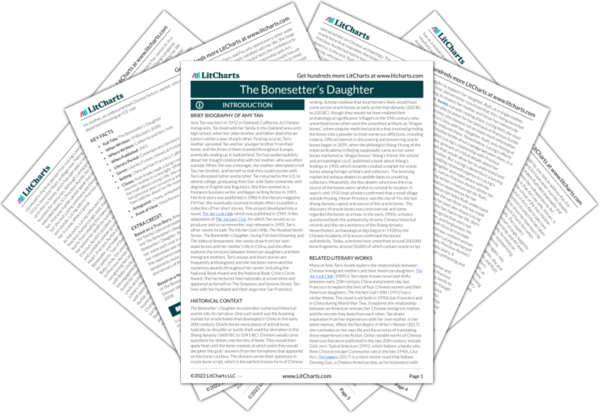The moth-eaten fabric in LuLing’s special chest symbolizes how time erodes memory. Time has even damaged the remnants of LuLing’s past that she has tried to preserve in her special chest. The destruction of these items is especially tragic for LuLing, whose life, it seems, has been defined by loss: not only has she lost people who are important to her, but she has lost, too, objects that might aid her in remembering them. This moment is also important because it establishes that Precious Auntie is LuLing’s mother, though she fails to explain why she refers to her mother as “Precious Auntie,” which is a peculiar detail that likely contributes to LuLing’s inability to remember their family name: she can’t remember the name because she never used it to refer to her mother in the first place.
